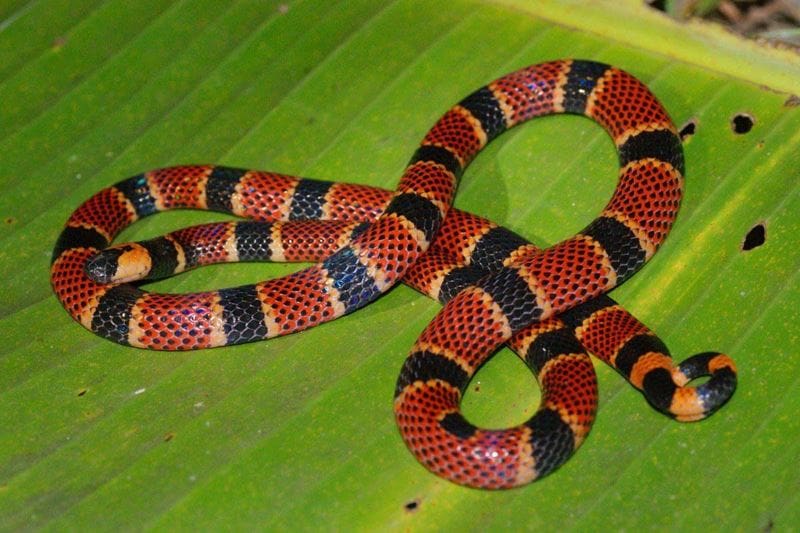
Costa Rican Coral Snakes
Of the 16 recognized species of coral snakes in Central America, four are currently known to occur in Costa Rica. Three of the four are widespread, occurring in habitats from sea level up to 1,500 meters, depending on the species. The fourth is only known to occur in the extreme southwestern part of the country.
Some of these snakes can reach a total length in excess of 1,500 millimeters. They are very secretive, often being found under debris and rocks in and around buildings, under foliage on the forest floor and in convenient burrows dug by smaller creatures.
Their bite is extremely dangerous, and should be professionally treated as soon as possible.
One of the coral snake’s notable mimics is the milk snake. There are currently three subspecies recognized in Costa Rica, all larger snakes, predominantly active at dusk and after dark.
Milk snakes are not venomous, but their bite can be quite painful if they are being handled, as they tend to hold on and chew enthusiastically. There can be a minimal amount of bleeding caused by the very small puncture wounds made by their many small teeth, but washing the wound with a good antiseptic will normally be adequate.
These two very different, but similar, snakes have a lot in common. They are all secretive and prefer to be active at dusk and after dark. They all lay eggs. They all tend to stay on the ground, rarely ascending into anything higher than the base of a small shrub. They like to eat snakes, lizards and in the case of milk snakes, small rodents. They are brightly colored as juveniles, with most of them retaining their bright colors throughout life.
Coral snakes have short, fixed front fangs and a relatively small gape, and are not capable of penetrating most heavy thick materials, so most good snake-proof leggings are adequate to repel their bite. They normally will not try to bite unless cornered, stepped on or handled. Given free passage, they will disappear as quickly as they appeared.
